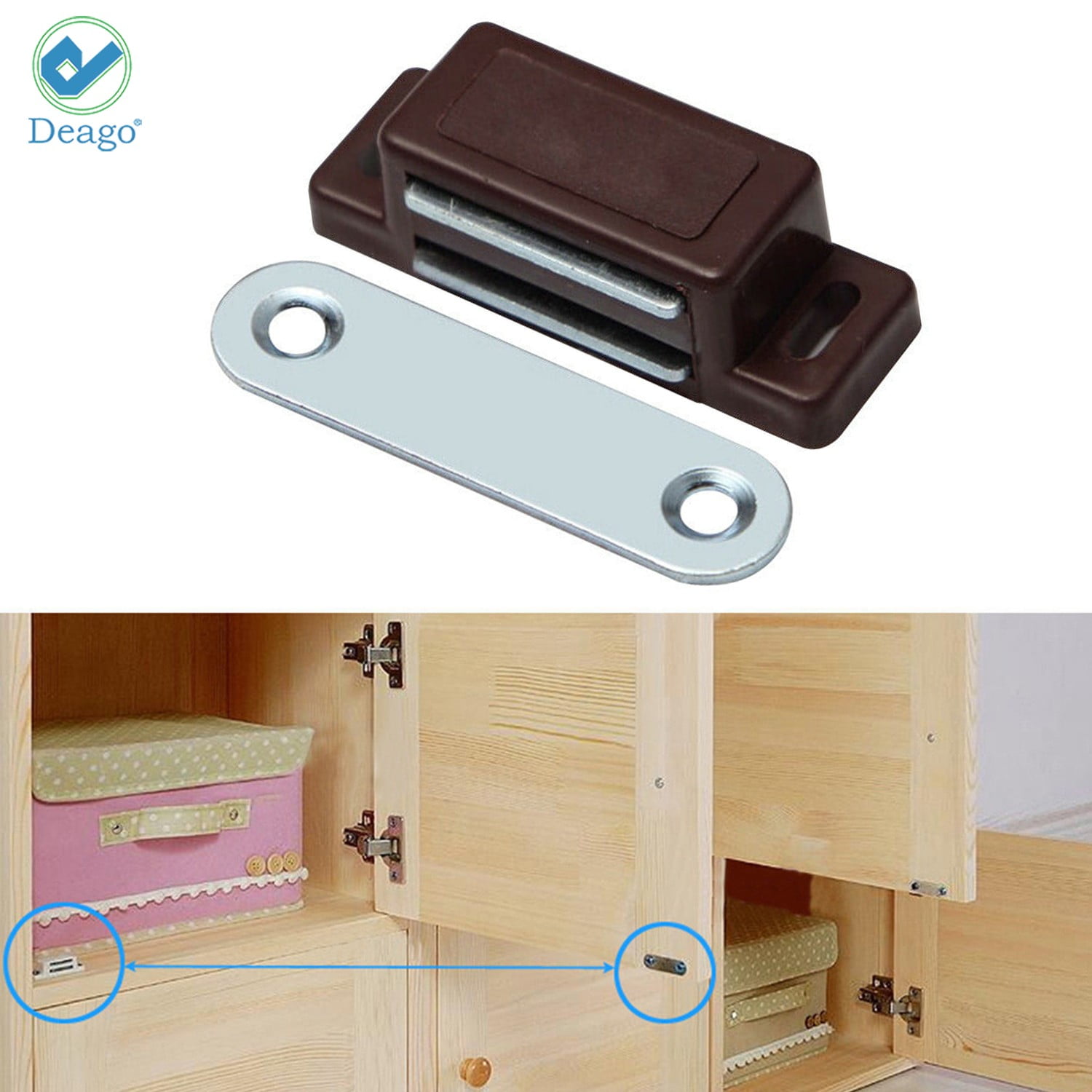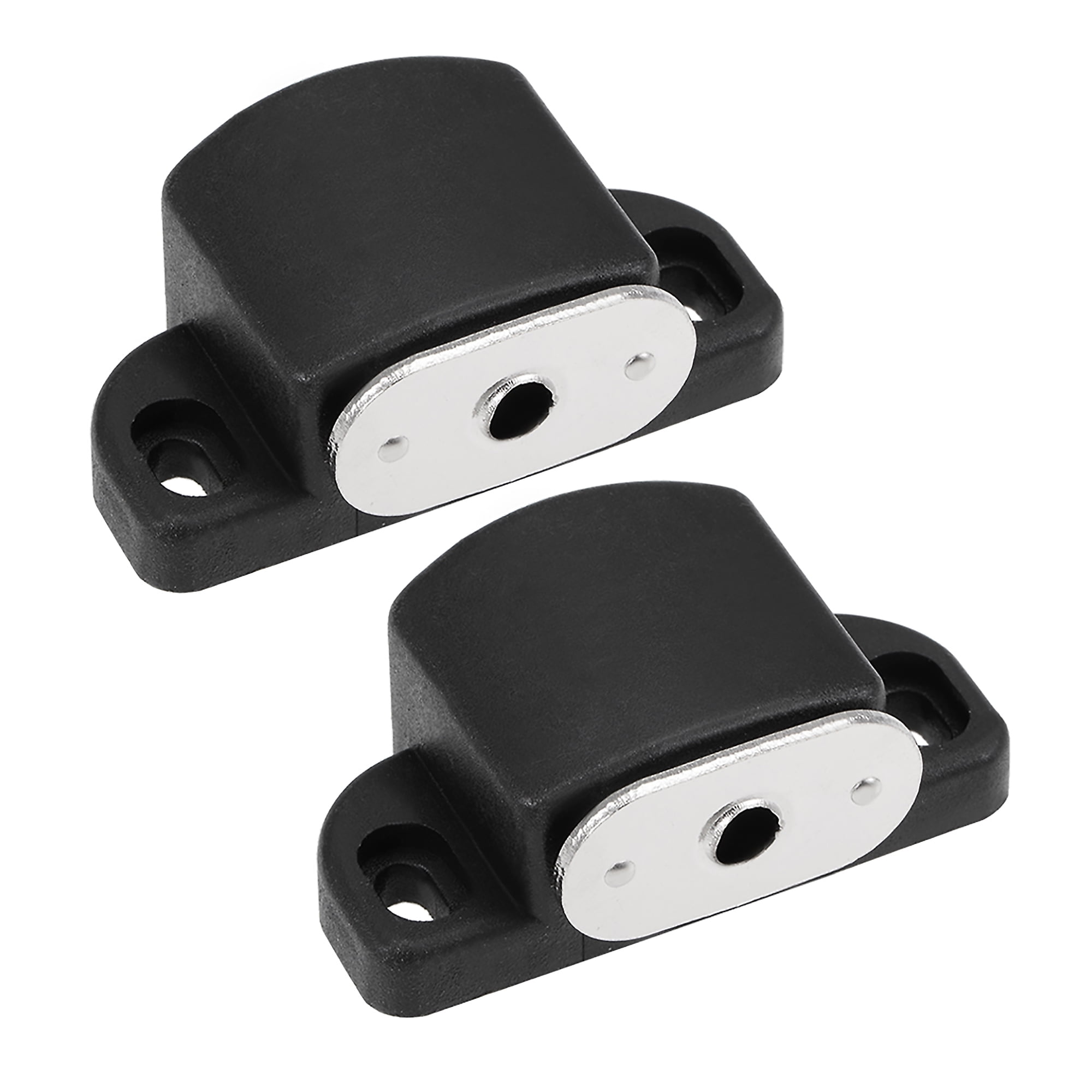Types of Magnets for Cabinet Doors: Magnets To Hold Cabinet Doors Shut

Selecting the right magnet for cabinet doors hinges on several factors, including door weight, material, and aesthetic preferences. The strength, cost, and ease of installation vary significantly between magnet types, necessitating careful consideration before purchase. This analysis explores the key options available to consumers and professionals.
Magnet Types and Their Properties
Several magnet types are suitable for cabinet door applications. The most common are neodymium, ferrite, and samarium cobalt magnets. Each offers a unique blend of strength, cost, and material compatibility. The table below summarizes their key characteristics.
| Magnet Type | Strength | Material Compatibility | Cost | Ease of Installation |
|---|---|---|---|---|
| Neodymium | Very High | Wood, Metal | High | Moderate |
| Ferrite (Ceramic) | Moderate | Wood, Metal | Low | Easy |
| Samarium Cobalt | Very High | Wood, Metal | Very High | Moderate |
Neodymium Magnets vs. Ferrite Magnets
Neodymium magnets are significantly stronger than ferrite magnets, requiring smaller sizes to achieve the same holding power. This makes them ideal for heavier cabinet doors or situations where a less visible solution is desired. However, neodymium magnets are more expensive and can be more challenging to install due to their higher strength. Ferrite magnets, while weaker, are significantly cheaper and easier to work with, making them a suitable choice for lighter doors and applications where cost is a primary concern. For example, a heavy oak cabinet door might benefit from the superior holding power of a neodymium magnet, whereas a lightweight kitchen cabinet door might adequately utilize a less powerful, but more affordable, ferrite magnet.
Determining Magnet Size and Strength
The appropriate magnet size and strength depend primarily on the weight and size of the cabinet door. Heavier doors require stronger magnets to ensure reliable closure. The door’s material also plays a role; metal doors may require slightly weaker magnets due to potential magnetic interference. Manufacturers typically provide guidelines relating magnet strength to holding force in kilograms or pounds. A safe approach is to select a magnet with a holding force exceeding the door’s weight by a significant margin (at least 20-30%) to account for variations in door alignment and environmental factors. For instance, a door weighing 5 kg would ideally require a magnet with a holding force of at least 6.5 kg. Precise calculations often involve considering the distance between the magnet and the magnetic counterpart embedded in the cabinet frame.
Installation Methods and Techniques

Securing cabinet doors with magnets requires careful consideration of installation methods to ensure both functionality and aesthetics. The choice of method depends on factors such as the material of the cabinet door and frame, the weight of the door, and the desired level of permanence. This section details various approaches, highlighting their advantages and disadvantages.
Magnet Placement Options
Strategic placement of magnets is crucial for optimal door closure. Incorrect placement can lead to uneven closure or insufficient holding power. Ideally, magnets should be positioned centrally on both the door and the frame, ensuring that the magnetic force is evenly distributed across the contact area. However, depending on the door design and hardware, alternative placements may be necessary. For instance, a small, powerful magnet might be sufficient near the door’s hinge side, providing enough pull without interfering with the hinge’s movement. Conversely, larger or heavier doors might require multiple magnets strategically placed for balanced closure. A visual guide would depict these options: A diagram showing a central placement (Option A), a hinge-side placement (Option B), and a placement using two smaller magnets for a larger door (Option C). Option A shows two circular magnets, one on the door and one on the frame, directly aligned. Option B shows a single rectangular magnet positioned close to the hinge on the door and a corresponding magnet on the frame. Option C displays two smaller circular magnets, one near the hinge and one near the handle on the door, with corresponding magnets on the frame. Each option’s caption would clearly label it and briefly describe its suitability.
Installation Methods: A Comparative Analysis
The table below Artikels three common installation methods, highlighting their pros and cons, and the necessary tools.
| Installation Method | Pros | Cons | Tools Required |
|---|---|---|---|
| Adhesive Mounting | Easy installation, no visible hardware, reversible. | May not be suitable for heavy doors or high-temperature environments; adhesive strength can degrade over time. | Strong adhesive (e.g., epoxy or industrial-strength double-sided tape), measuring tape, pencil. |
| Screw Mounting | Strongest and most permanent hold, suitable for heavy doors. | Requires drilling holes, potentially damaging the cabinet; less aesthetically pleasing. | Screwdriver (appropriate type for screw size), drill with pilot bit (if necessary), screws, measuring tape, pencil. |
| Magnetic Mounting (using metal plates) | Strong hold, allows for adjustable magnet placement, less invasive than screw mounting. | Requires additional metal plates, potentially increasing cost and installation complexity. | Metal plates (with adhesive backing or screw holes), strong adhesive or screws, measuring tape, pencil. |
Step-by-Step Installation Guide (Adhesive Method), Magnets to hold cabinet doors shut
This guide focuses on the adhesive method due to its relative simplicity. Always ensure the surfaces are clean, dry, and free of dust before applying adhesive.
1. Planning and Measurement: Carefully measure and mark the exact placement of the magnets on both the door and the frame, ensuring alignment. Consider the visual guide presented earlier to optimize placement.
2. Adhesive Application: Apply the adhesive to the back of the magnet according to the manufacturer’s instructions. Allow the adhesive to cure slightly before attaching the magnet.
3. Magnet Placement: Firmly press the magnet onto the marked location on the door and frame. Hold it in place for several minutes to ensure proper adhesion.
4. Testing: Gently close the cabinet door to test the magnetic hold. Adjust placement if necessary, ensuring the magnets align perfectly.
Troubleshooting Installation Challenges
Uneven surfaces can hinder proper magnet alignment and adhesion. To mitigate this, consider using shims (small pieces of material) to level the surface before applying the magnet. Incorrect magnet placement can lead to weak or uneven closure. Re-evaluate the placement using the visual guide, ensuring the magnets are correctly aligned and sufficiently close. If the magnets are too weak for the door’s weight, consider using stronger magnets or adding more magnets strategically.
Alternative Solutions and Considerations

While magnetic catches offer a sleek and often effortless solution for securing cabinet doors, they aren’t the only option. Several alternative mechanisms provide comparable functionality, each with its own set of advantages and disadvantages. Understanding these alternatives allows for informed decision-making based on specific needs and preferences.
Magnets to hold cabinet doors shut – Beyond magnets, various methods exist for keeping cabinet doors securely closed. These include traditional hinges, latches, and catches, each presenting a unique balance of cost, aesthetics, and ease of installation. The optimal choice depends on factors such as the cabinet’s style, budget, and desired level of security.
Comparison of Cabinet Door Closure Methods
The following table compares magnetic catches with other common methods for securing cabinet doors. It considers factors crucial for making an informed decision: cost, visual appeal, ease of installation, and longevity.
| Method | Cost | Appearance | Ease of Installation | Durability |
|---|---|---|---|---|
| Magnetic Catch | Low to Moderate | Clean, Minimalist | Relatively Easy | Good to Excellent (depending on quality) |
| Friction Hinge | Low to Moderate | Traditional, Visible | Easy | Good |
| Latch with Knob or Handle | Moderate to High | Varied, Can Be Decorative | Moderate | Good to Excellent |
| Concealed Catch | Moderate to High | Clean, Minimalist (when closed) | Moderate to Difficult | Excellent |
Safety Considerations with Magnetic Catches
While generally safe, magnetic catches present potential safety concerns, particularly when used near sensitive electronic devices or in households with young children. Understanding these risks is crucial for responsible implementation.
Strong magnets can potentially interfere with the operation of nearby electronic devices, such as hard drives or credit cards. This interference can range from minor data corruption to complete device failure. Therefore, it’s crucial to maintain a safe distance between powerful magnets and sensitive electronics. For children, the potential exists for injury if fingers are caught between the door and the magnet. Choosing magnets with appropriate strength and ensuring proper installation can mitigate these risks.
